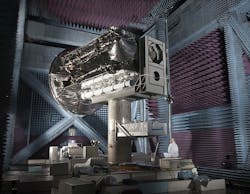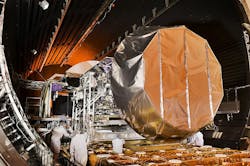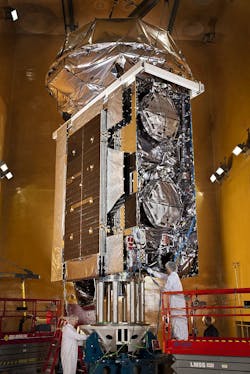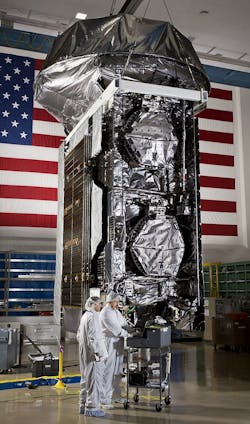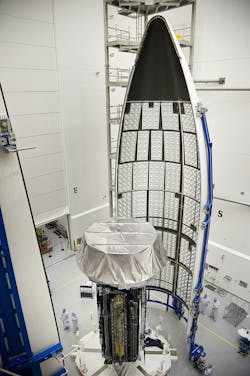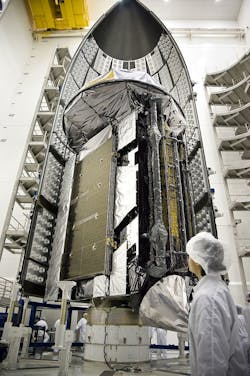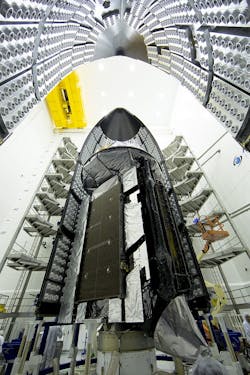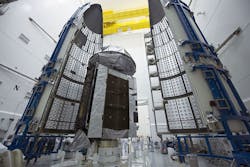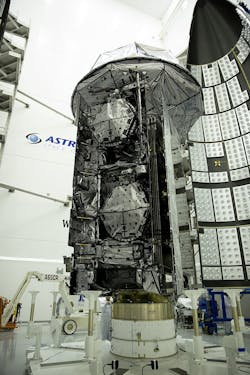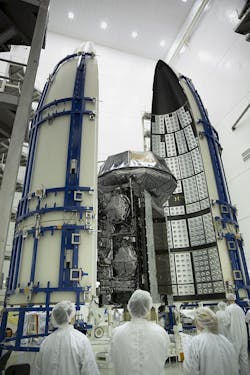The U.S. Navy’s Mobile User Objective System (MUOS) is a next-generation narrowband tactical satellite communications system designed to improve ground communications for U.S. forces on the move. MUOS will provide military users more communications capability over existing systems, including simultaneous voice, video, and data -- similar to the capabilities experienced today with smart phones.
MUOS satellites are equipped with a Wideband Code Division Multiple Access (WCDMA) payload that provides a 16-fold increase in transmission throughput over the current Ultra High Frequency (UHF) satellite system. Each MUOS satellite includes a legacy UHF payload that is compatible with the current UHF Follow-on system and legacy terminals. This dual-payload design ensures a smooth transition to the cutting-edge WCDMA technology while the UFO system is phased out.
Lockheed Martin is currently under contract to deliver five MUOS satellites and the associated ground system to the U.S. Navy.
Lockheed Martin Space Systems, Sunnyvale, Calif., is the MUOS prime contractor and system integrator. The Navy's Program Executive Office for Space Systems, Chantilly, Va., and its Communications Satellite Program Office, San Diego, Calif., are responsible for the MUOS program.
For MUOS, Lockheed Martin is building on its proven record of providing progressively advanced spacecraft for protected, narrowband and wideband military satellite communications. Lockheed Martin built the legacy Milstar-protected communications satellites, as well as the Defense Satellite Communications Systems (DSCS) wideband communications spacecraft for the U.S. Air Force. Lockheed Martin is also the prime contractor on the U.S. Air Force’s Advanced Extremely High Frequency (AEHF) program, a next-generation military satellite communications system to deliver vastly improved global, survivable, highly secure, protected communications capabilities for strategic command and tactical warfighters operating on ground, sea and air platforms.
A critical element of U.S. national security, military satellite communications delivers vital connectivity to armed forces around the globe, making warfighters safer and more effective.
Images courtesy Lockheed Martin Corp.
You might also like:
Subscribe today to receive all the latest aerospace technology and engineering news, delivered directly to your e-mail inbox twice a week (Tuesdays and Thursdays). Sign upfor your free subscription to the Intelligent Inbox e-newsletter at http://www.intelligent-aerospace.com/subscribe.html.
Connect with Intelligent Aerospace on social media: Twitter (@IntelligentAero), LinkedIn,Google+, and Instagram.
Intelligent Aerospace
Global Aerospace Technology NetworkIntelligent Aerospace, the global aerospace technology network, reports on the latest tools, technologies, and trends of vital importance to aerospace professionals involved in air traffic control, airport operations, satellites and space, and commercial and military avionics on fixed-wing, rotor-wing, and unmanned aircraft throughout the world.

